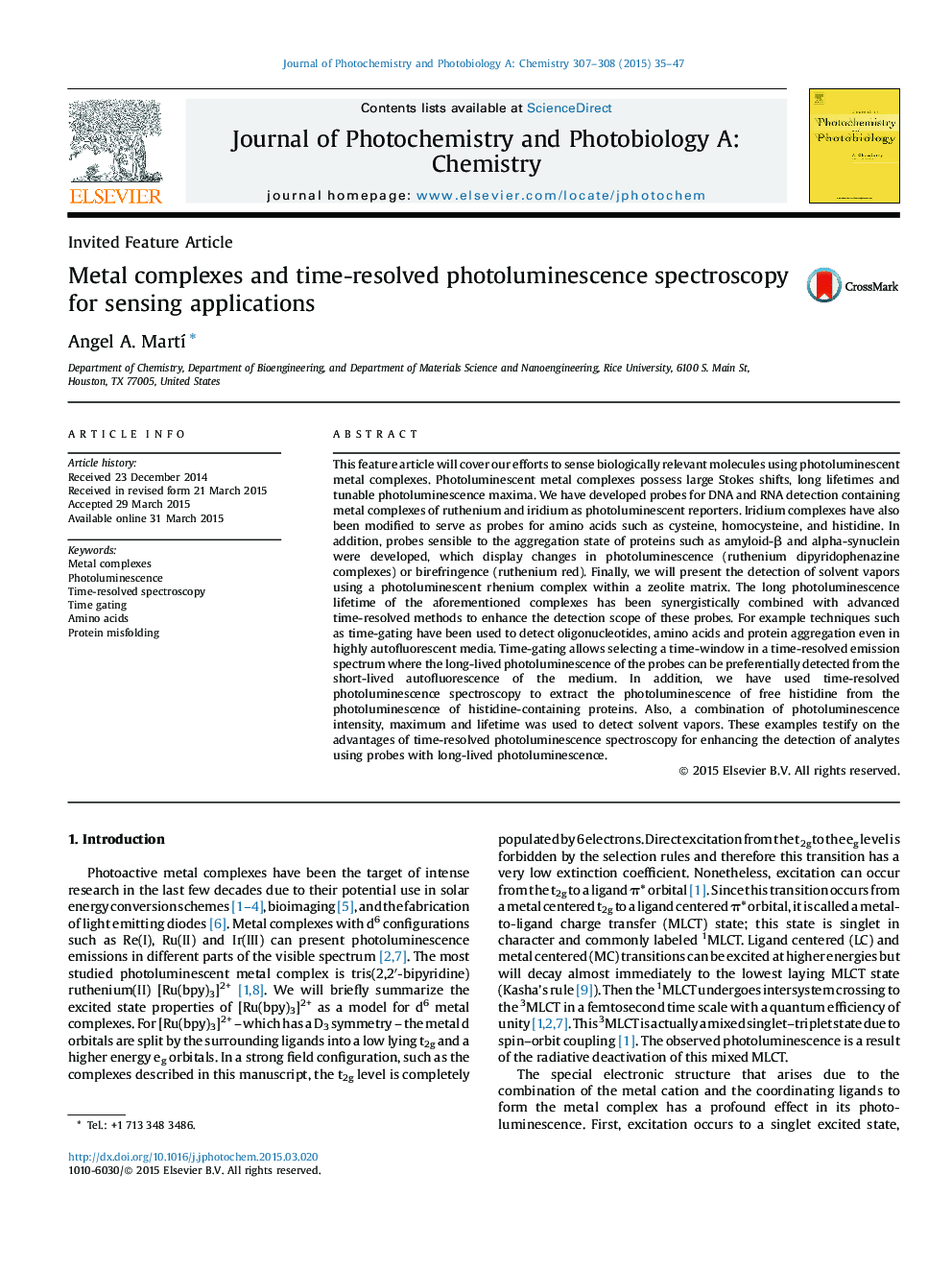| Article ID | Journal | Published Year | Pages | File Type |
|---|---|---|---|---|
| 26034 | Journal of Photochemistry and Photobiology A: Chemistry | 2015 | 13 Pages |
•Molecular beacons with metal complexes (ruthenium and iridium) for detecting DNA.•Iridium complexes for detecting thiol-containing amino acids.•Iridium complexes for detecting free histidine in the presence of histidine-rich proteins.•Ruthenium dipyridophenazine complexes for detecting protein misfolding.•Rhenium complexes for detecting solvent vapors.•Long-lived metal complexes for detecting a variety of analytes in strongly autofluorescent medium.
This feature article will cover our efforts to sense biologically relevant molecules using photoluminescent metal complexes. Photoluminescent metal complexes possess large Stokes shifts, long lifetimes and tunable photoluminescence maxima. We have developed probes for DNA and RNA detection containing metal complexes of ruthenium and iridium as photoluminescent reporters. Iridium complexes have also been modified to serve as probes for amino acids such as cysteine, homocysteine, and histidine. In addition, probes sensible to the aggregation state of proteins such as amyloid-β and alpha-synuclein were developed, which display changes in photoluminescence (ruthenium dipyridophenazine complexes) or birefringence (ruthenium red). Finally, we will present the detection of solvent vapors using a photoluminescent rhenium complex within a zeolite matrix. The long photoluminescence lifetime of the aforementioned complexes has been synergistically combined with advanced time-resolved methods to enhance the detection scope of these probes. For example techniques such as time-gating have been used to detect oligonucleotides, amino acids and protein aggregation even in highly autofluorescent media. Time-gating allows selecting a time-window in a time-resolved emission spectrum where the long-lived photoluminescence of the probes can be preferentially detected from the short-lived autofluorescence of the medium. In addition, we have used time-resolved photoluminescence spectroscopy to extract the photoluminescence of free histidine from the photoluminescence of histidine-containing proteins. Also, a combination of photoluminescence intensity, maximum and lifetime was used to detect solvent vapors. These examples testify on the advantages of time-resolved photoluminescence spectroscopy for enhancing the detection of analytes using probes with long-lived photoluminescence.
Graphical abstractFigure optionsDownload full-size imageDownload as PowerPoint slide
